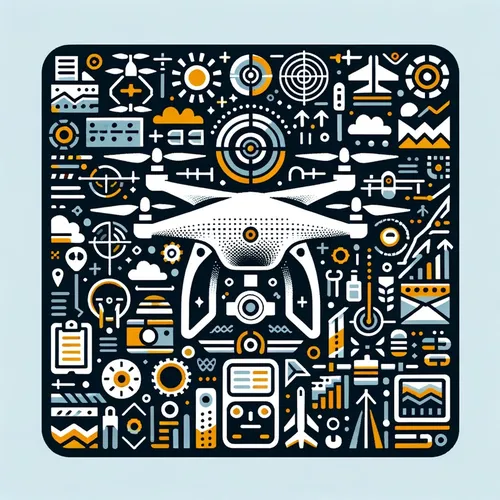Drone Pilots Soar High: Juicy Industry Secrets Revealed!
- Author
- Quiet. Please
- Published
- Mon 30 Jun 2025
- Episode Link
- https://www.spreaker.com/episode/drone-pilots-soar-high-juicy-industry-secrets-revealed--66802191
This is you Professional Drone Pilot: Flight Tips & Industry Updates podcast.
For professional drone pilots, the landscape in mid-2025 is rich with opportunities, technological advancements, and new challenges. Advanced flight techniques are increasingly in demand, with beyond visual line of sight operations gaining regulatory traction after the FAA Reauthorization Act of 2024. Operators capable of autonomous mission planning and dynamic obstacle avoidance are highly sought after in sectors such as infrastructure inspection and emergency response. Staying current with flight software updates and practicing precision maneuvers—like waypoint missions and lock-on tracking—gives pilots a competitive edge in the commercial arena.
Equipment maintenance remains a priority as fleet sizes grow, especially for operators serving agriculture, energy, and logistics. Regular firmware checks, battery cycling, and sensor calibrations help extend hardware life and minimize costly downtime. Optimizing payloads for each job—for instance, swapping between high-resolution cameras and multispectral sensors—maximizes both equipment longevity and mission outcomes. Investment in NDAA-compliant, domestically produced drones is accelerating in response to new security-focused regulations impacting certain foreign-manufactured platforms.
On the business front, the enterprise drone industry continues its strong expansion, with the U.S. commercial drone market now estimated over thirty billion dollars and projected to grow annually by about ten percent into the next decade. Job prospects remain robust: construction, real estate, media, and agriculture are increasingly reliant on certified pilots to deliver aerial photography, mapping, and inspection services. Those with cross-disciplinary skills—such as data analysis and AI-powered image interpretation—will find themselves especially well positioned. Recent news highlights the rollout of national Unmanned Traffic Management systems, standardizing digital airspace deconfliction and opening new corridors for routine commercial flights.
Maintaining FAA certification is essential. Pilots must complete recurrent training every two years to keep their credentials valid and stay abreast of regulatory changes, including mandatory remote identification requirements now fully in effect. Insurance carriers have updated liability clauses in response to increased data privacy scrutiny and changing BVLOS rules, so policy review is a must for all operators.
Professional success increasingly hinges on clear client communication, transparent pricing, and tailored proposals that articulate return on investment for each project. As competition intensifies, building long-term relationships and offering value-added services—like real-time data portals or sustainability tracking—will differentiate top-tier pilots from the rest.
Looking ahead, continued integration of drones with satellite and cloud-based analytics promises even greater value for clients across industries. Pilots who invest in ongoing education, embrace new tech, and prioritize safe, compliant operations will remain at the forefront of this dynamic, rapidly evolving field.
For more http://www.quietplease.ai
Get the best deals https://amzn.to/3ODvOta
